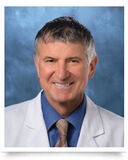Mitral Valve Awareness: Complex Mitral Valve Surgery
Written By: Adam Pick, Patient Advocate, Author & Website Founder
Medical Expert: Wilson Szeto, MD, Chief of Cardiovascular Surgery at Penn Presbyterian Medical Center
Published: April 15, 2023
So far, during Mitral Valve Disease Awareness Week, we’ve focused on the management and the treatment of isolated mitral valve disease. However, many patients with mitral valve disease are also diagnosed with related cardiac conditions including coronary artery disease, atrial fibrillation and aortic aneurysms.
To learn more about the advanced treatment of complex mitral valve and associated heart disease types, we interviewed Dr. Wilson Szeto, the Chief of Cardiovascular Surgery at Penn Presbyterian Medical Center in Philadelphia, Pennsylvania.
Facts About Complex Mitral Valve Surgery
Here are important findings shared by Dr. Szeto about the advanced surgical techniques for complex mitral valve disease.
- Mitral valve disease is a complex diagnosis that typically falls into two types – mitral stenosis (a narrow valve) and mitral regurgitation (a leaky valve).
- The anatomy of the mitral valve is critical for determining the best treatment – either mitral valve repair or mitral valve replacement.
- While mitral valve disease can be an isolated diagnosis, patients may experience other valvular defects within the aortic, tricuspid and pulmonary valves.
- Patients with mitral valve disease may also be diagnosed with serious cardiac disorders including atrial fibrillation, coronary artery disease, aortic aneurysms, and hypertrophic cardiomyopathy.
- Surgeons may treat mitral valve disease and other cardiac conditions during a “concomitant procedure” in which multiple forms of heart disease are treated at the same time, during one operation.
- Atrial fibrillation may be treated with a Maze procedure (e.g. surgical ablation).
- Coronary artery disease may be treated with coronary artery bypass grafting (CABG).
- Aortic aneurysms can be repaired using Dacron grafts.
- Hypertrophic cardiomyopathy can be treated using myectomy and resection tecniques.
- The outcomes for concomitant mitral valve surgery can be very favorable for patients when performed by an experienced cardiac surgeon and cardiac center. “Despite the rise in complexity over the last two decades, I’m excited to share with our patients that the outcomes have also improved over the last two decades,” states Dr. Szeto. “Patients can now expect cutting-edge therapy with great outcomes in many centers of excellence.”
Keep Learning About Mitral Valve Disease
As part of Mitral Valve Disease Awareness Week, we’re sharing new information to educate you about the management and treatment of mitral valve disease including:
- Surgeon Q&A: The Future of Mitral Valve Therapy
- See the Mitral Valve Disease Awareness Week Educational Microsite
Keep on tickin!
Adam
P.S. For the deaf and hard of hearing, I have provided a written transcript of the video with Dr. Szeto below:
Mitral valve disease is a complex diagnosis. My name is Wilson Szeto. I’m currently the chief of cardiovascular surgery at Penn Presbyterian Medical Center in Philadelphia, Pennsylvania.
Mitral valve disease is a complex diagnosis. It ranges from mitral stenosis as well as mitral regurgitation. That is leaky valves versus valves that do not quite open normally. Based on the anatomy of the mitral valve, that will dictate the type of care, ranging from mitral valve replacement, mitral valve repair, and in patients that are either older or have other significant medical conditions, catheter-based therapies may also be an option for them.
Mitral valve disease can occur in association with other type of valvular disease including aortic valve disease, tricuspid valve disease, and rarely, pulmonic valve disease. There are treatments that could treat all the valvular diseases at the same time in one index operation. Mitral valve disease can also been seen and associated with other cardiac diagnoses that will require surgical treatment.
Number one, atrial fibrillation or a fast, irregular heartbeat, can be treated effectively with a procedure called Maze Procedure. Secondly, coronary artery disease can sometimes be also associated with mitral valve disease. Coronary artery bypass grafting, or what we can revasulcarization, to provide more blood to the heart around these blockages. Number three, aortic aneurysms or dilated blood vessels – the concern with aortic aneurysms is that they could rupture. Lastly, hypotrophic cardiomyopathy or thickening of the septum inside the heart, a procedure called a surgical myeoectomy or resecting or cutting out that portion of the heart that’s too thickened, these are very effective treatment strategies with good outcomes and of course, improve the quality of the patients and their lifestyle after the surgery.
Over the last two decades, cardiac surgery has evolved quite a bit, as well as the complexity of the procedures we’re doing, procedures that would require concomitant components to address multiple diagnoses. Despite the rise in complexity over the last two decades, I’m excited to share with our patients that the outcomes have also improved over the last two decades. Patients can now expect cutting-edge therapy with great outcomes in today and many, many centers of excellence.












